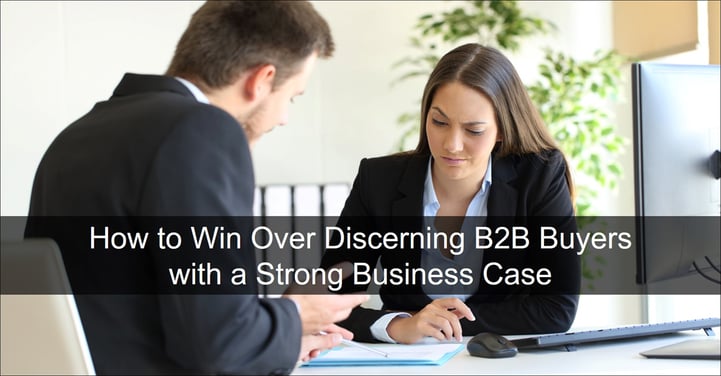
Business-to-business (B2B) selling is complex, especially when justifying the price of a solution. Today’s buyers are increasingly discerning and value-driven, so B2B sellers must thoroughly understand their buyers' needs and their solution’s value. A value selling methodology and ROI tools can help.
Developing a Value Selling Methodology
Using a value selling methodology enables sellers to create a compelling business case for their solution and justify the price to potential buyers.
This methodology focuses on the value that a solution can bring to the buyer's organization. It requires that sellers understand and convey their buyer’s needs and pain points instead of simply emphasizing the features and functionality of the solution. Sellers can then demonstrate how their solution can solve these problems and add value to the buyer's organization.
Identifying the benefits (aka value drivers) that the buyer will receive from the solution can be achieved through active listening and by asking insightful questions to understand the buyer's challenges and goals. By doing so, sellers can tailor their solution to meet the specific needs of the buyer, showcase how their solution can solve the buyer's problems and estimate the impact on the customer’s bottom line.
The Importance of ROI Tools
ROI tools help make it easy to estimate the solution’s value. These tools calculate the metrics that financial decision makers care about most.
-
Net Present Value (NPV)
The NPV is the present value of the expected cash inflows minus the present value of the expected cash outflows. -
ROI
The ROI is the percentage of return on investment based on the initial investment and the net gains from the solution. -
Payback Period
The payback period is the time it takes for the solution to generate enough cash inflows to recover the initial investment.
The first step in using ROI tools is to collect the necessary data on the size of the buyer’s problems, how much the solution can alleviate the problems and the timeframe for realizing the benefits. Sellers must also consider the potential risks and uncertainties associated with how the customer implements and uses the solution and adjust the calculations accordingly. By doing this, sellers can present a realistic estimate of the financial benefits that the customer will receive from the solution.
B2B sellers should also provide evidence of the ROI of their solution to support their business case. This is typically achieved through case studies and by providing testimonials or references from satisfied customers. Detailed case studies show potential buyers how the solution has helped other customers increase revenue, reduce costs, or otherwise benefit from successfully implementing the solution.
Combining Methodology and ROI Tools
When using a value selling methodology and ROI tools, B2B sellers should follow these tips:
-
Understand the Buyer's Needs and Pain Points
Take the time to understand the buyer's organization and its specific needs and pain points. This will help sellers tailor their solution to the buyer's unique requirements and create a compelling business case. -
Emphasize the Benefits
Focus on the benefits that the solution can bring to the buyer's organization. By highlighting these benefits, sellers can differentiate their solution from alternatives such as competitors and homegrown solutions. -
Use Specific Data to Support the Business Case
Use data collected in the discovery process to support their business case. This data should include the size of the problems, the financial benefits of the solution, the timeframe for realizing those benefits, and the costs associated with implementing the solution. -
Provide Evidence of ROI
Whenever possible, sellers should provide evidence of the ROI of their solution. This can be achieved by providing case studies and testimonials from satisfied customers.
Conclusion
The value selling methodology and ROI tools can be a powerful combination for B2B sellers to justify the price of their solution to buyers. By conducting a comprehensive needs analysis and focusing on the value that their solution can bring to the buyer's organization, B2B sellers can demonstrate the value of their solution and overcome price objections.
Resources
Connect with David Svigel on LinkedIn.
Join the Value Selling for B2B Marketing and Sales Leaders LinkedIn Group.
Visit the ROI Selling Resource Center.









